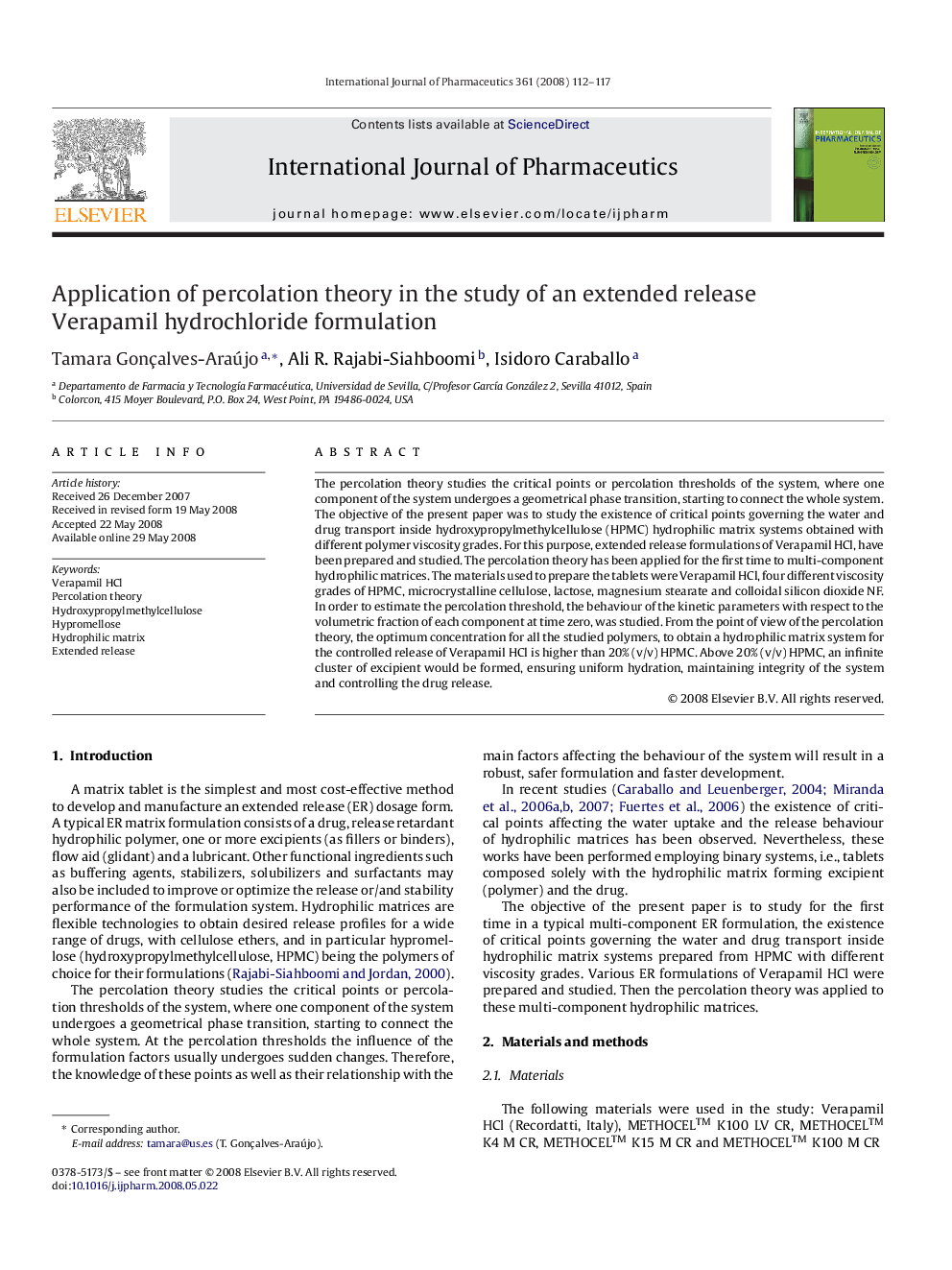| Article ID | Journal | Published Year | Pages | File Type |
|---|---|---|---|---|
| 2505244 | International Journal of Pharmaceutics | 2008 | 6 Pages |
The percolation theory studies the critical points or percolation thresholds of the system, where one component of the system undergoes a geometrical phase transition, starting to connect the whole system. The objective of the present paper was to study the existence of critical points governing the water and drug transport inside hydroxypropylmethylcellulose (HPMC) hydrophilic matrix systems obtained with different polymer viscosity grades. For this purpose, extended release formulations of Verapamil HCl, have been prepared and studied. The percolation theory has been applied for the first time to multi-component hydrophilic matrices. The materials used to prepare the tablets were Verapamil HCl, four different viscosity grades of HPMC, microcrystalline cellulose, lactose, magnesium stearate and colloidal silicon dioxide NF. In order to estimate the percolation threshold, the behaviour of the kinetic parameters with respect to the volumetric fraction of each component at time zero, was studied. From the point of view of the percolation theory, the optimum concentration for all the studied polymers, to obtain a hydrophilic matrix system for the controlled release of Verapamil HCl is higher than 20% (v/v) HPMC. Above 20% (v/v) HPMC, an infinite cluster of excipient would be formed, ensuring uniform hydration, maintaining integrity of the system and controlling the drug release.
